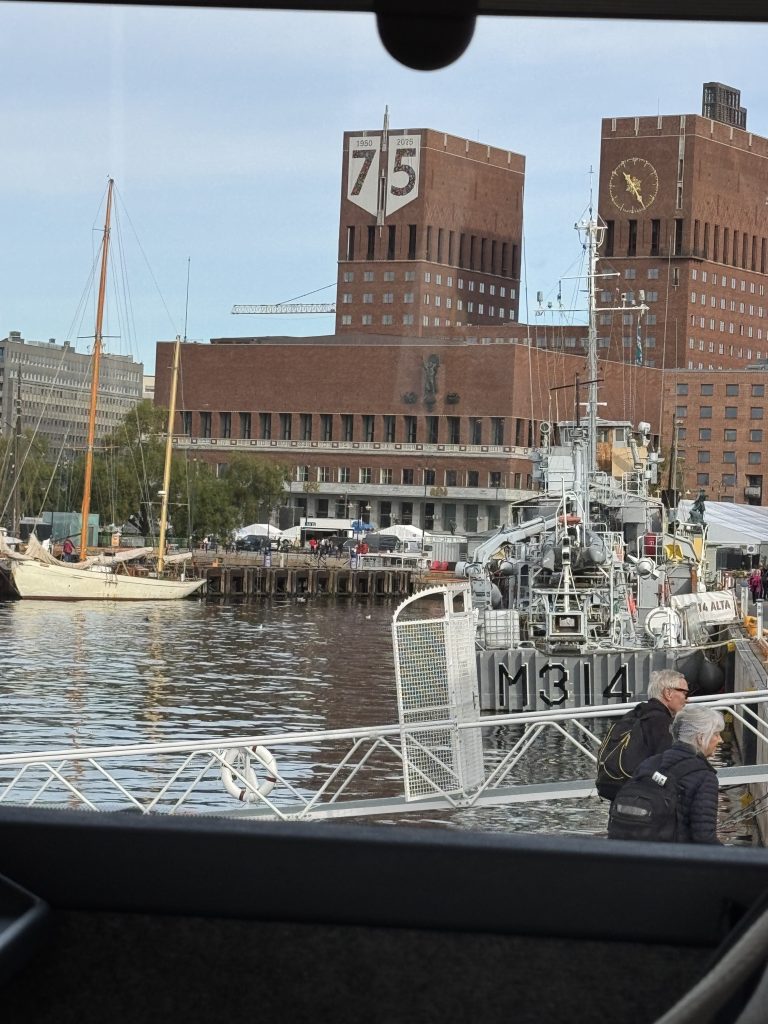
This was a hurried shot through the bus window, I’m sorry, but here is the building where they give out the Nobel Peace Prize. Something maybe some of you don’t know, but the guy who invented the Peace Prize is actually indirectly responsible for more deaths than anyone else. He made his fortune by inventing dynamite.
It was all fun and games until his invention started to be used in warfare. Alfred Nobel was definitely NOT ok with this, but obviously he was unable to stop it. To assuage his guilt, he used his fortune to establish the Nobel Peace Prizes.
Oslo has 650,000 people. It’s the oldest and the smallest capital city in Scandinavia.
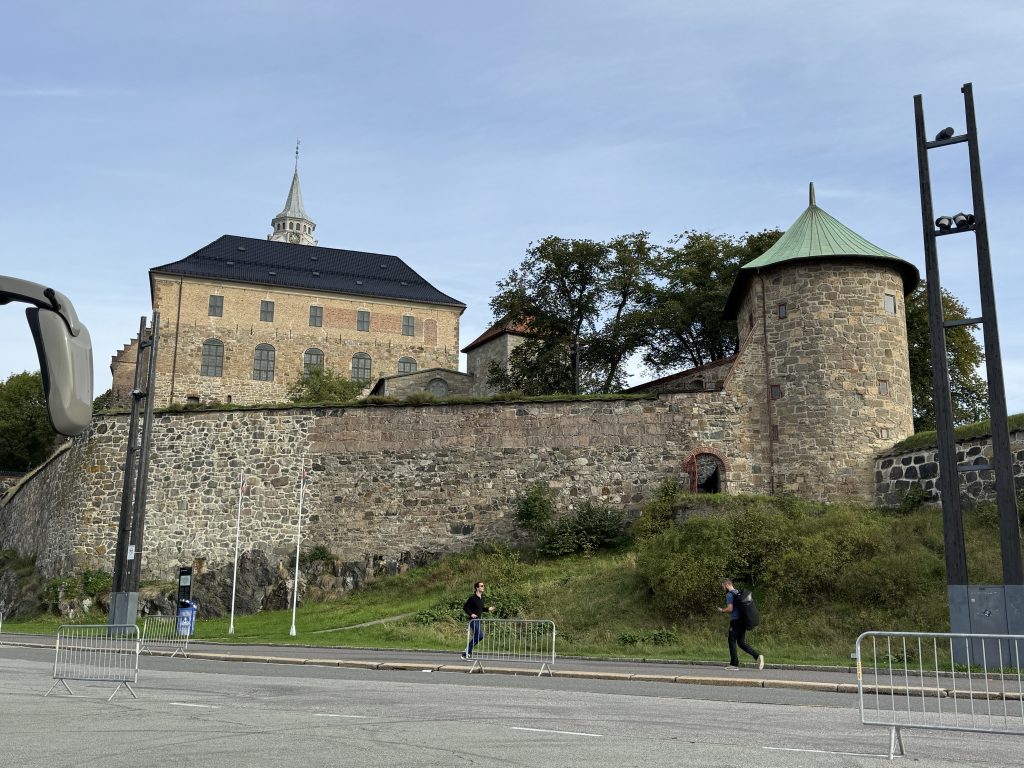
The first place we went to after we left the ferry was the old castle. It was established in 1299, with various rulers adding bits and pieces as they went.
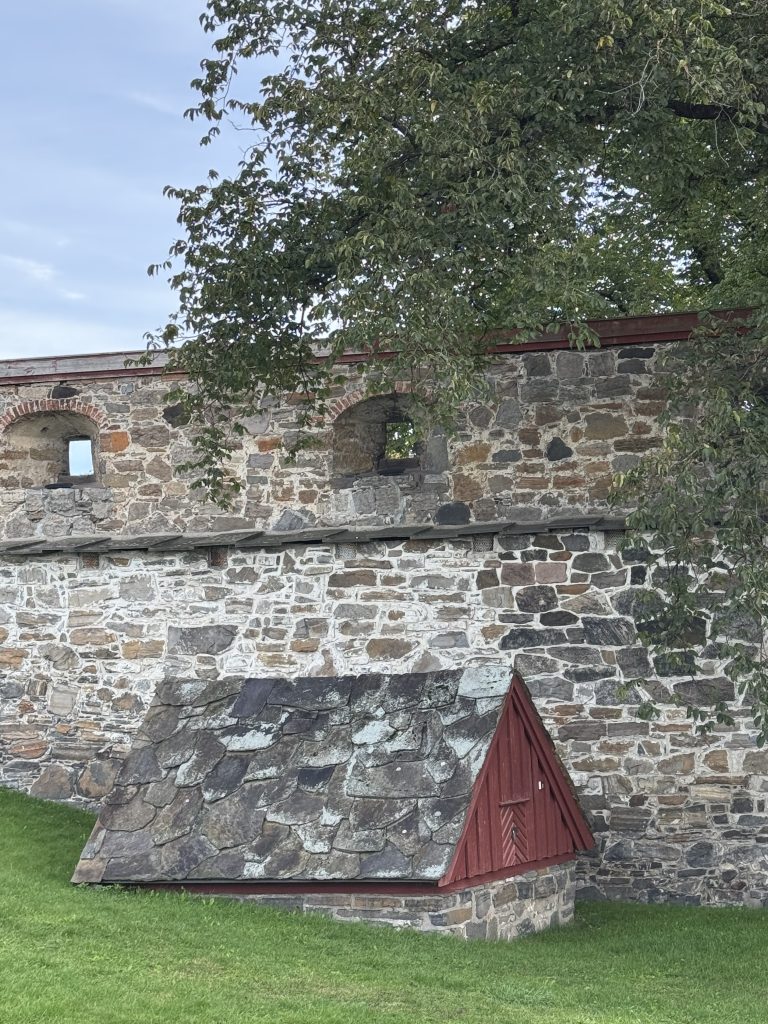
This well is 10 metres deep and still has water.
The Swedish were their main enemies “but now they are our sweet big brothers,” said the Oslo guide we had for the day.
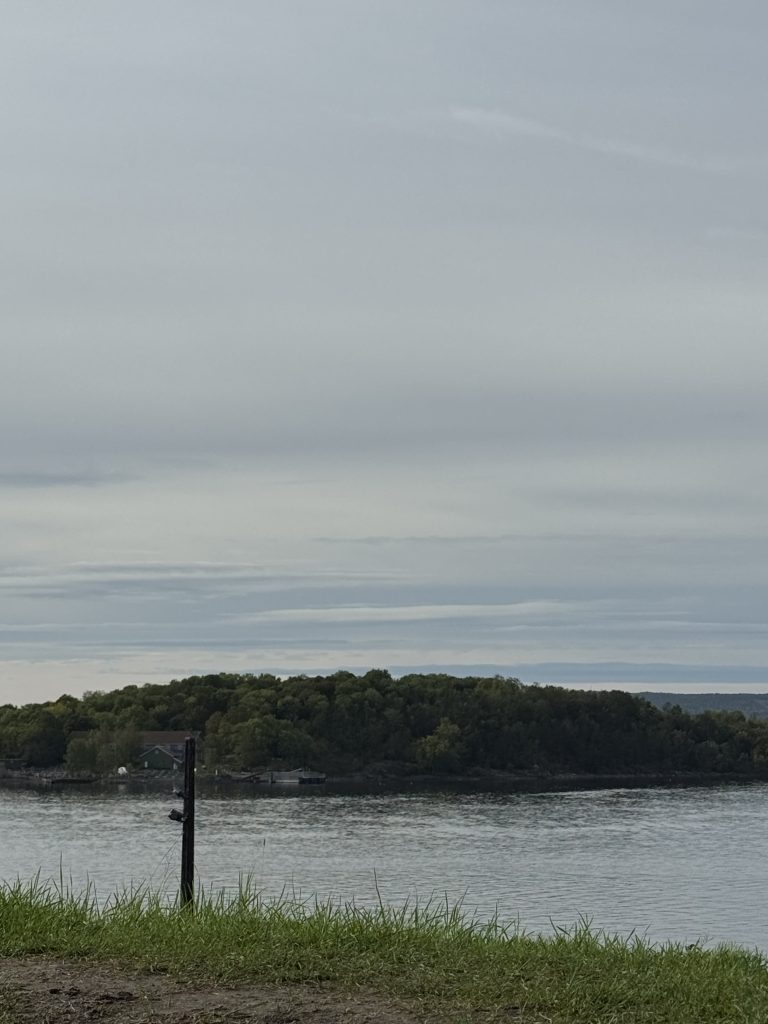
She pointed towards one of the islands in the fjord. A Cistercian monastery was established by England in the 11th century. They were not allowed to speak and even though the monastery is in ruins today, when people visit they still respect the tradition and only speak when they reach the ruin of the only room the monks were permitted to speak.
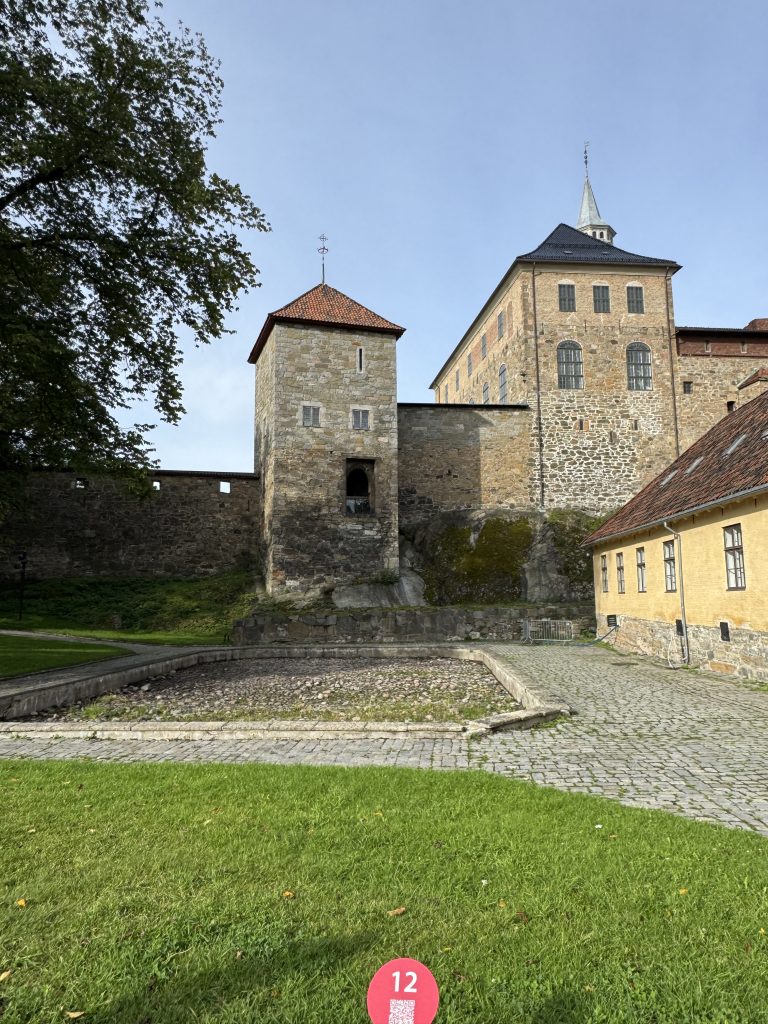
See that tiny doorway high up? That was the main entrance back in 1299 when King Hakon 5th built it.
The fort was attacked 5 times in its history and was never breached.
Naturally, it has ghosts. 11 of them, including 1 horse, and 1 dog.
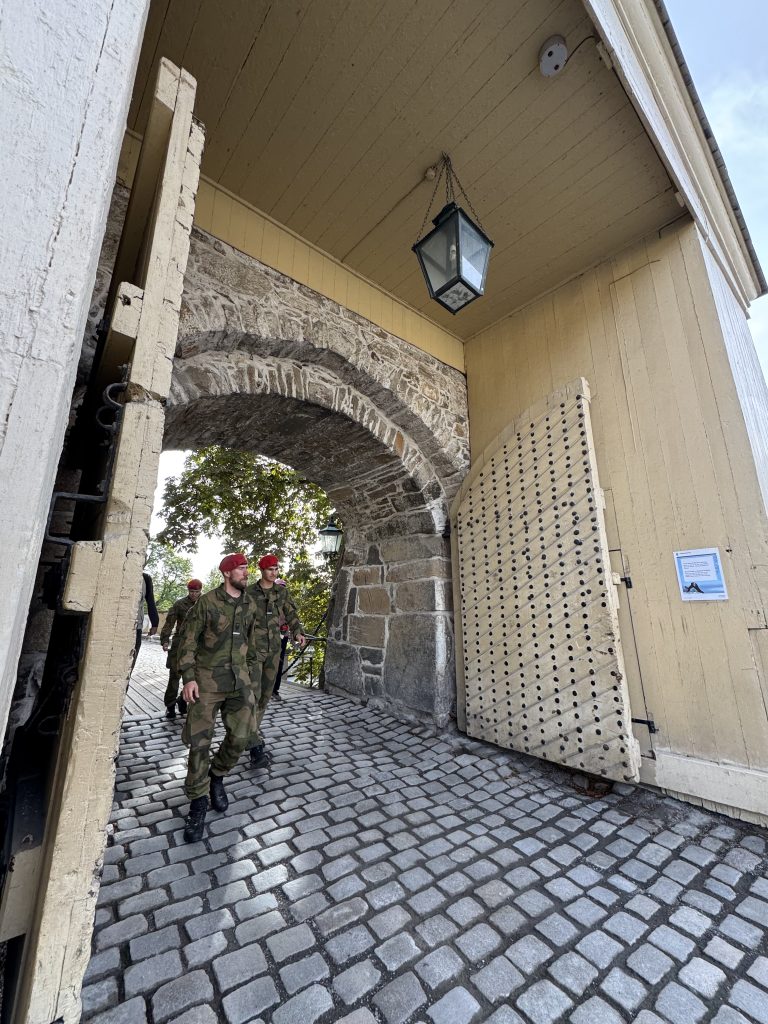
It’s still a working military base.
National Service is mandatory from age 19 for one year. Then they are in the reserves until age 45, but only professional soldiers serve abroad.
We walked through here and went down to a very impressive sculpture.
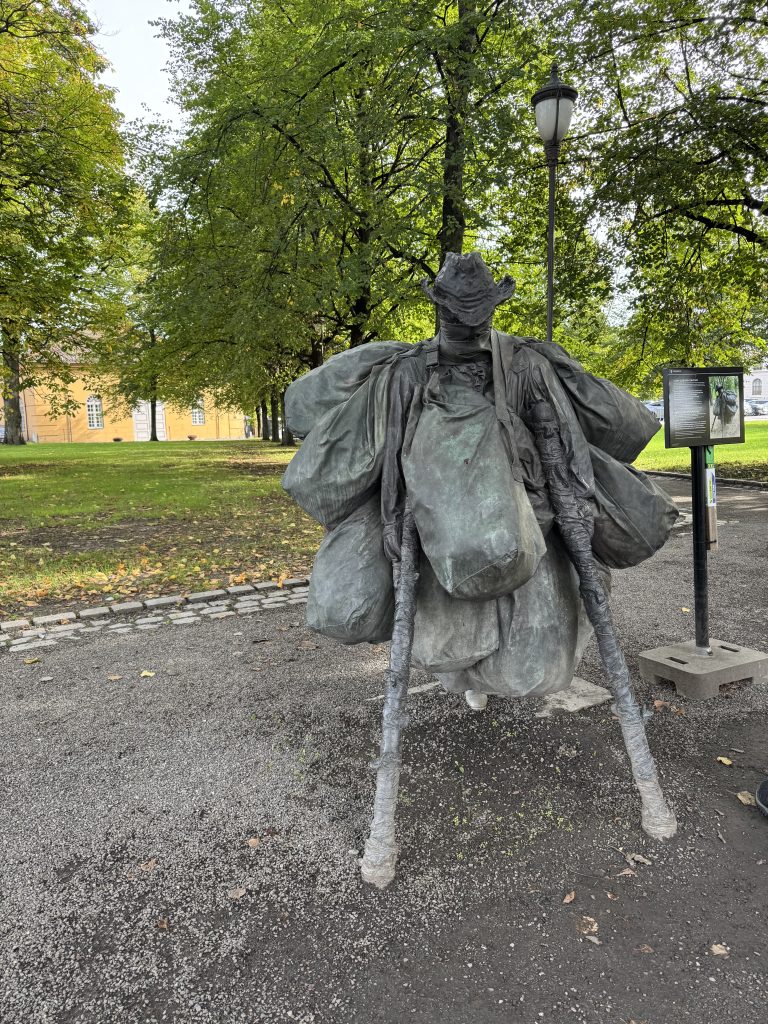
This was commissioned after WWII, symbolising the burdens and baggage that both soldiers and civilians had to carry after the conflict ended.
WWII, Norway had a great trading relationship with both England and Germany, so was taken unawares when Germany invaded. Hitler demanded that the Norwegian king surrender.
The King delayed giving an answer to Germany about surrender for 3 days. By the time the answer “No” was given, the King and government had escaped to England, where they stayed for the next 5 years.
Meanwhile, the Norwegian resistance, many of whom trained in Scotland, returned to Norway and caused great trouble for the Nazis.One of my favourite books of all time is John Steinbeck’s ‘ The Moon is Down’, which is set in Norway during the war. It’s a short read, but unforgettable.
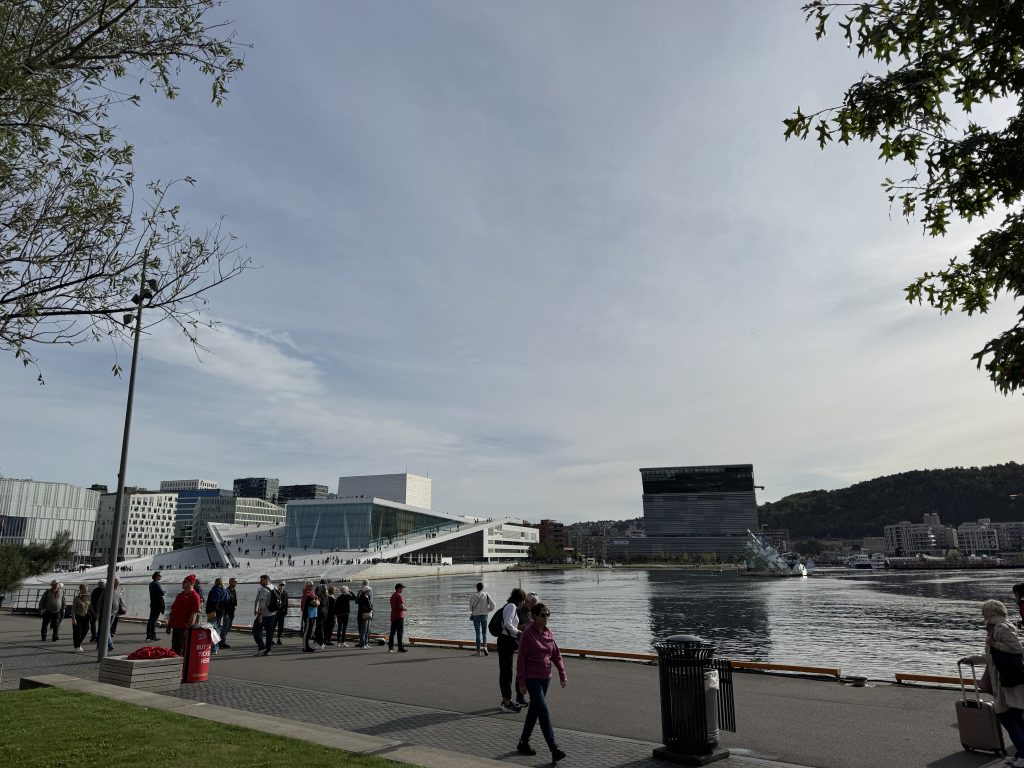
Library 100 years project.
Authors submit a manuscript, agreeing that they will not disclose the contents. Around the big ski jump in the centre of Oslo, they have planted 100 spruce trees. When they reach 100 years old, they will be cut down and the manuscripts will be printed and their contents will finally be revealed.
What a fantastic project!
Norway has a target for all private cars to be electric by this year, and buses within the next 2 years… even though electric buses stop working during winter.
The bus driver said that their politicians have an eye to future jobs in the EU so they ignore practicalities.
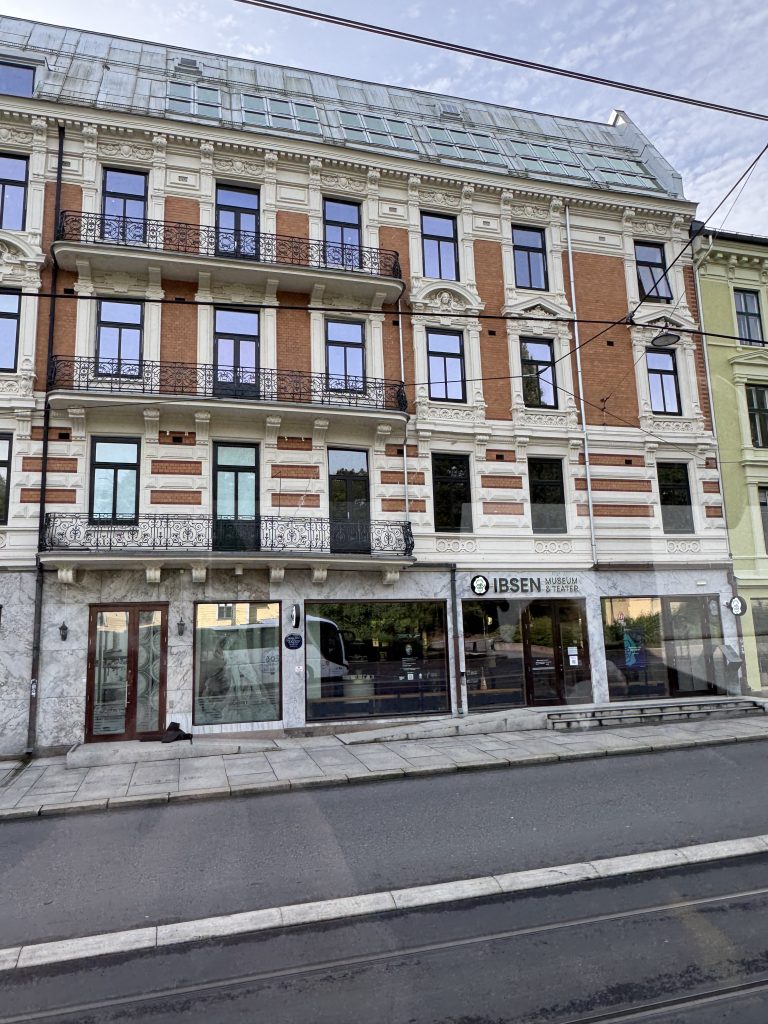
Ibsen’s house.
On the second floor. Now it’s a museum. Apparently, his plays are performed more often worldwide than Shakespeare. We have a free day back in Oslo in 6 days. I might come here, or maybe I’ll go to the Munch museum to see ‘The Scream.’
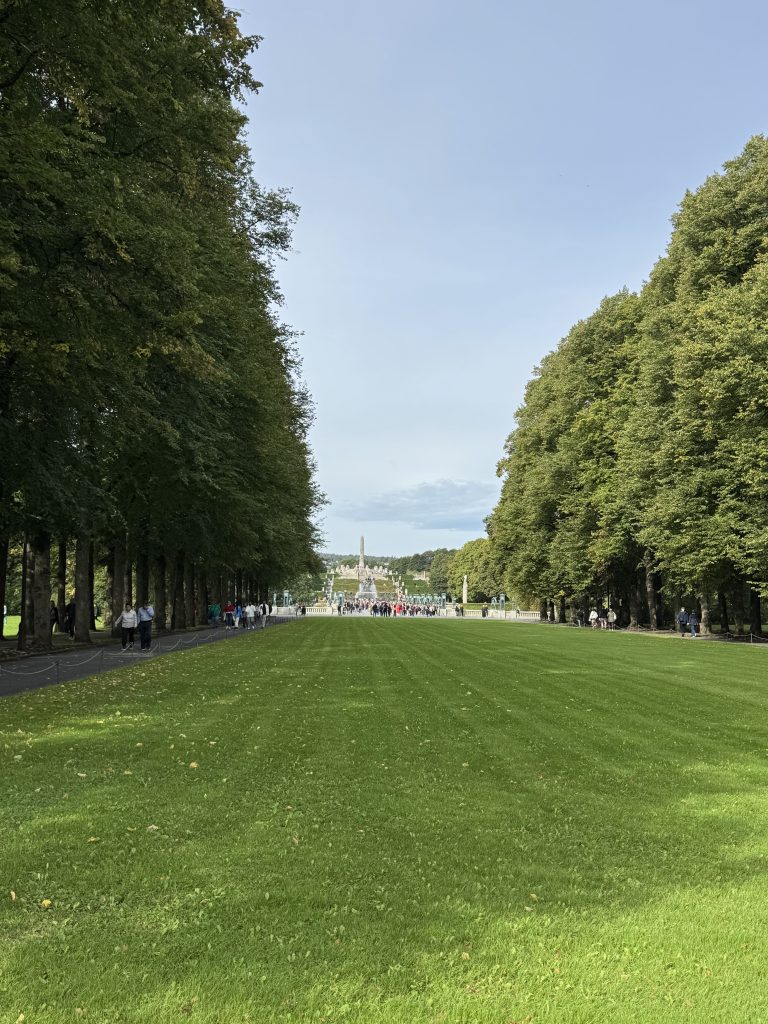
We spent an hour in a park that is apparently the pride of Norway.
Deservedly so. It took 9 years to plan and 40 years to build, finally finishing in 1943, during the war. Gustav Vigeland was the sculpter’s name.
The whole park is about humanity and its struggles through life. The life cycle of us all, both men and women.
The sculptures are extraordinary.
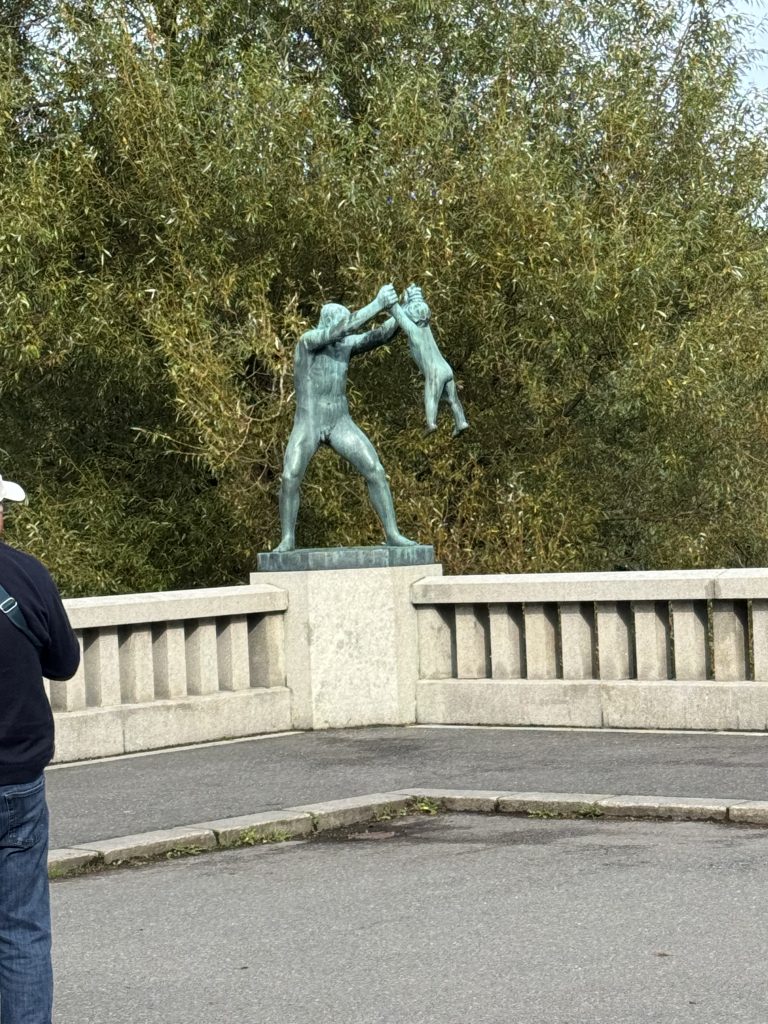
The first section is filled with parents and their children.
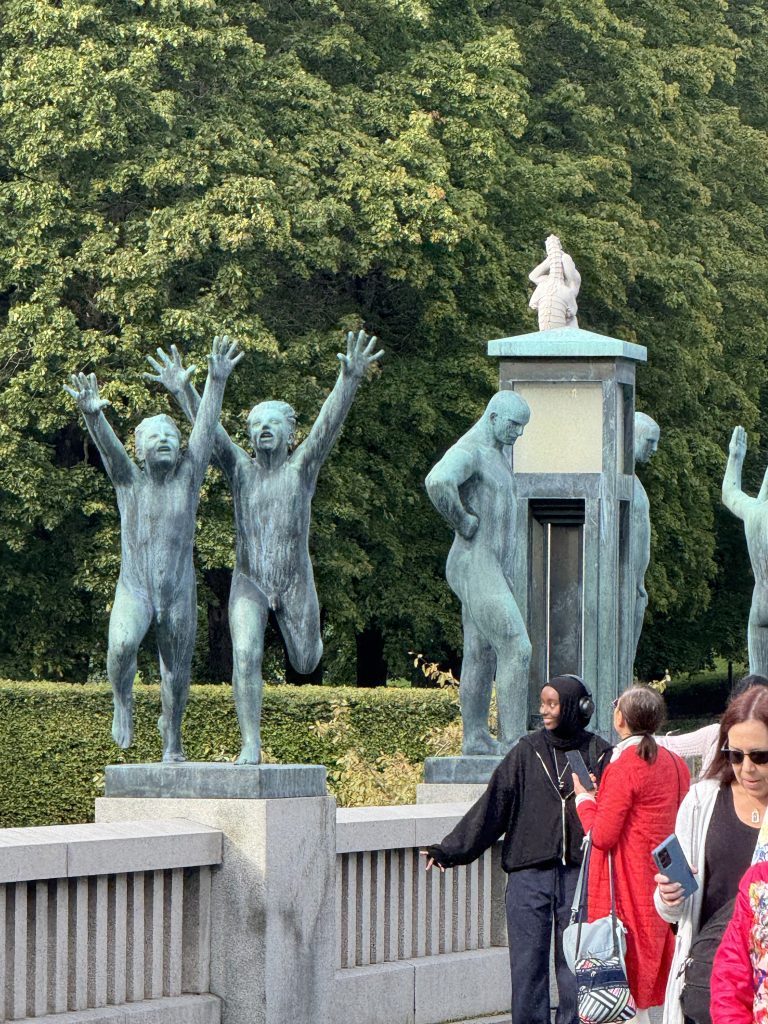
People were having fun, imitating the poses of the statues for photos.
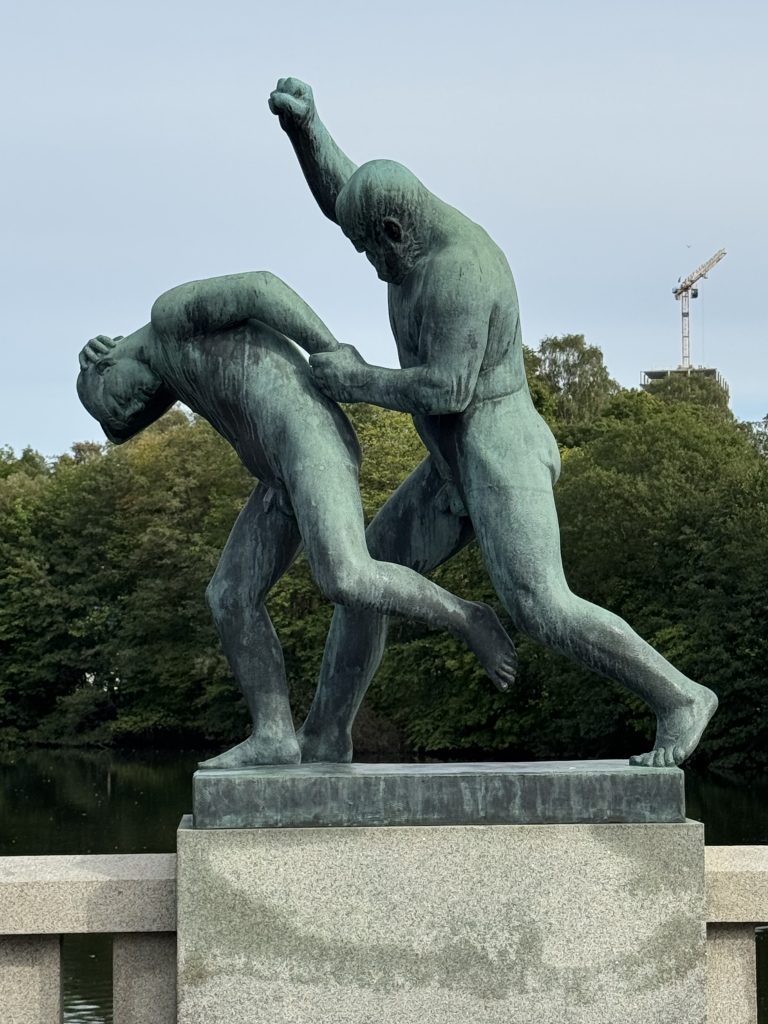
Yet, some of the sculptures had a dark side. This park isn’t all sweetness and light. It shows both the bright and dark sides of life.
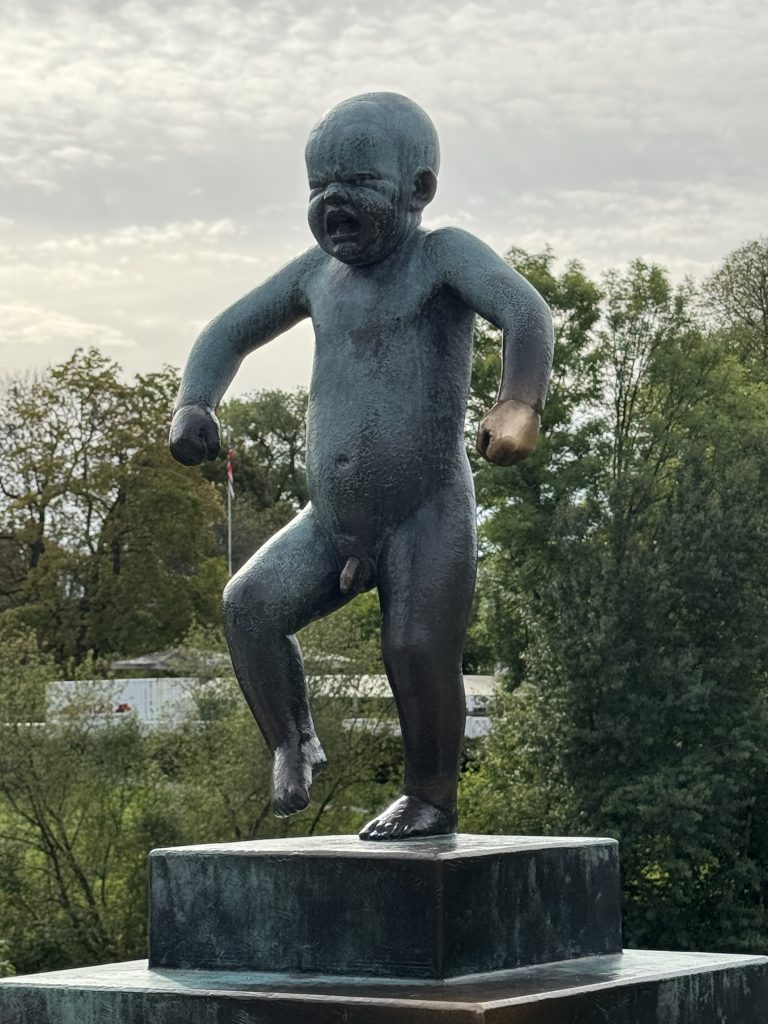
Including toddler tantrums.
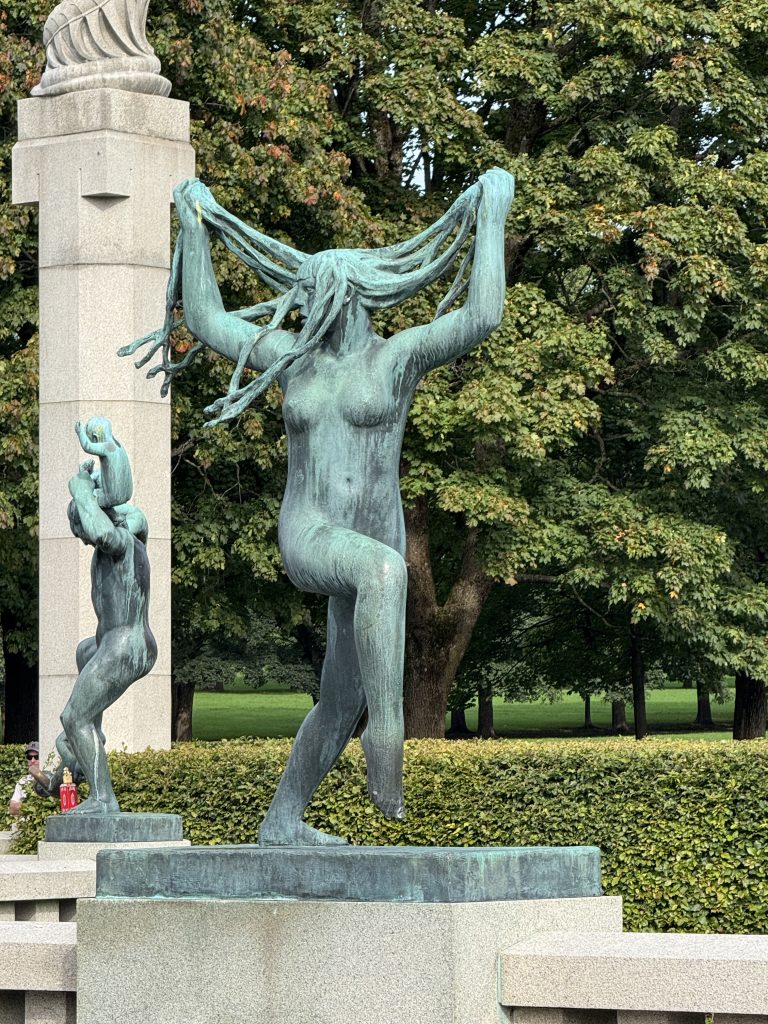
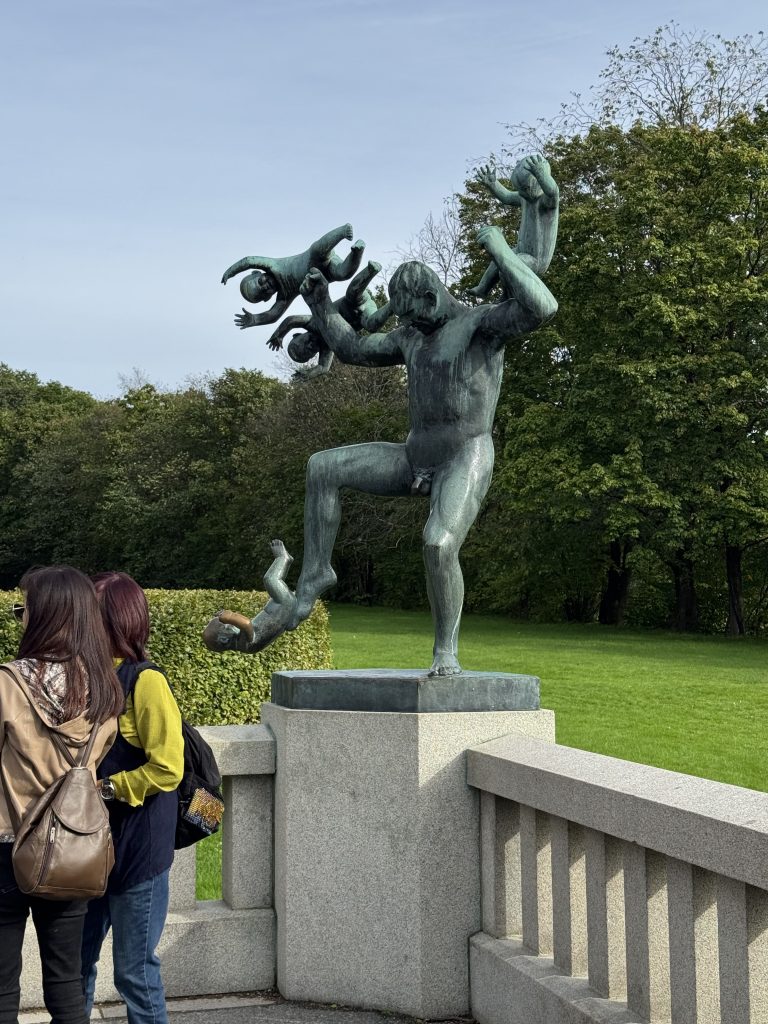
Lord knows, I probably looked like this sometimes when my four kids were small. I had 4 under 5…
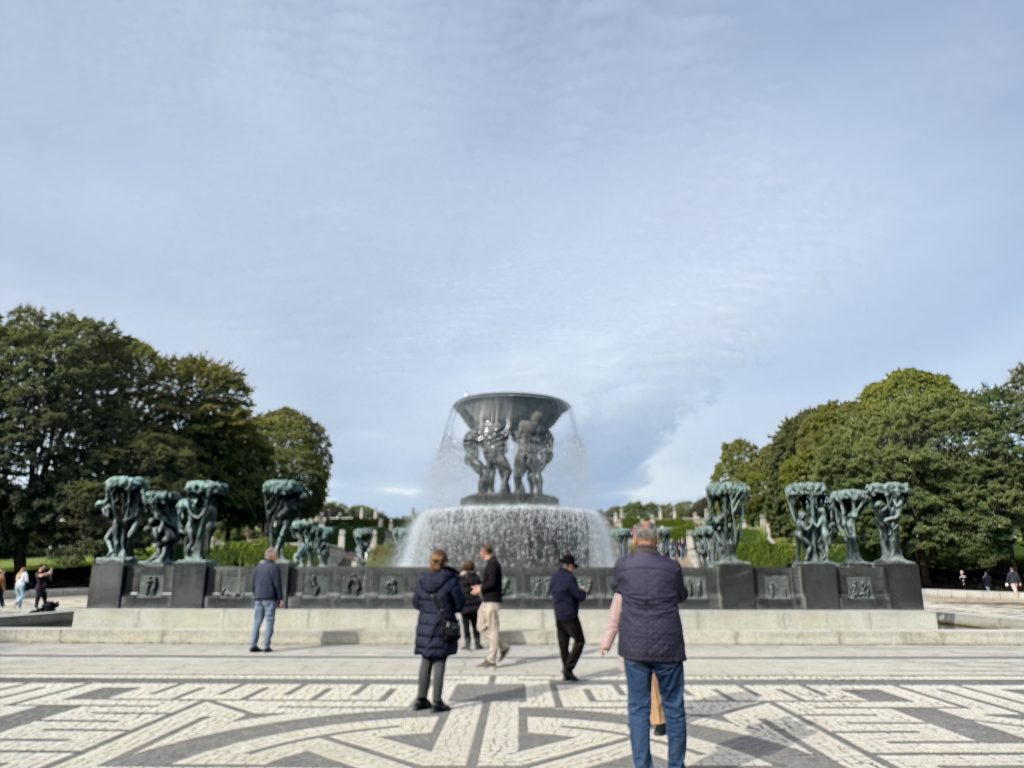
The next section was a huge fountain.
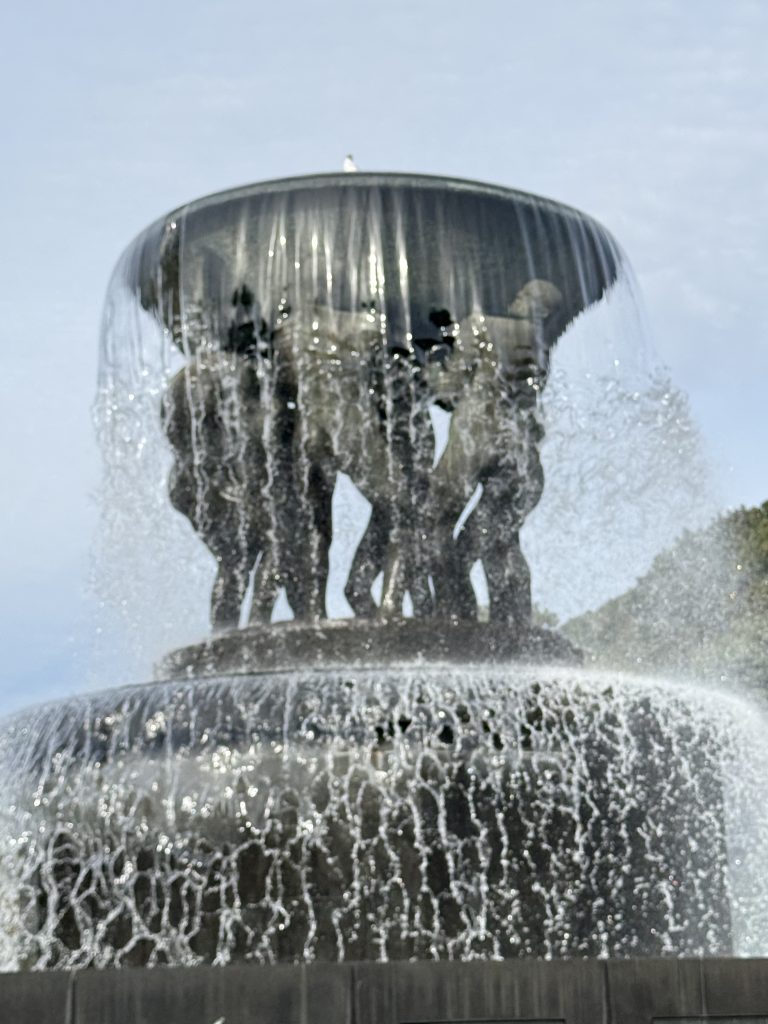
It was huge. Men of all different stages in life struggle under the burdens that life brings.
Meanwhile, a seagull majestically rides above it all, proving that birds are humanity’s natural overlords. I doubt that this was what Gustav Vigeland intended.
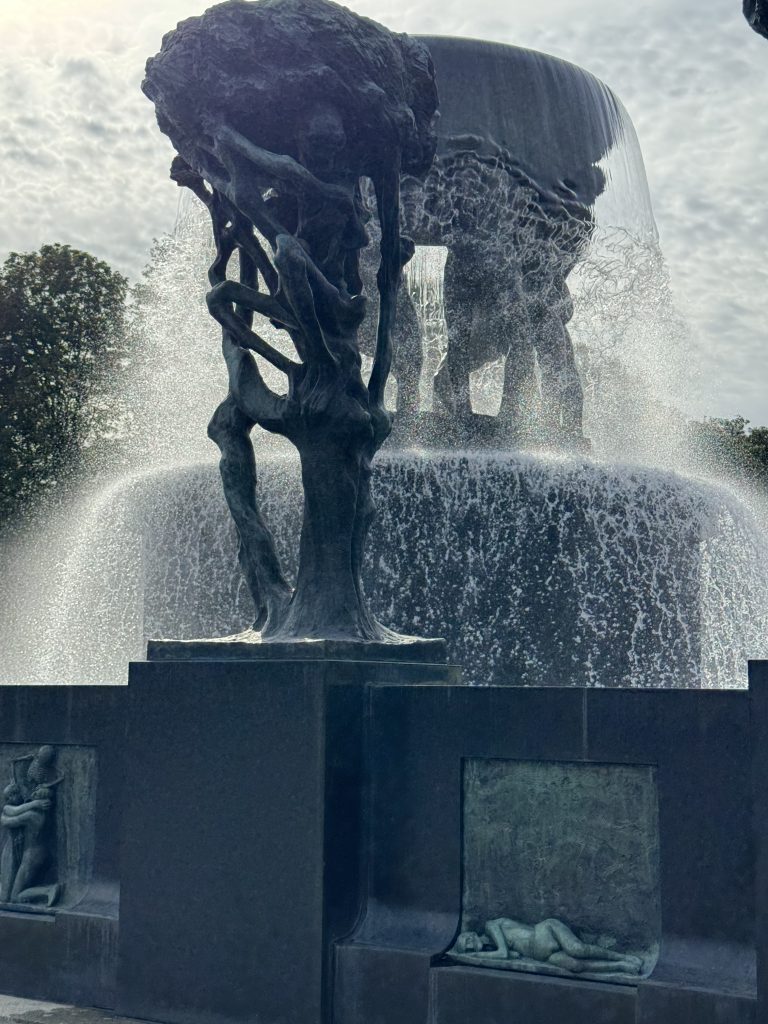
The light was totally at the wrong angle for this, but zoom in and you can see that one of the 20 figures around the fountain is a skeleton. Death is a part of life.
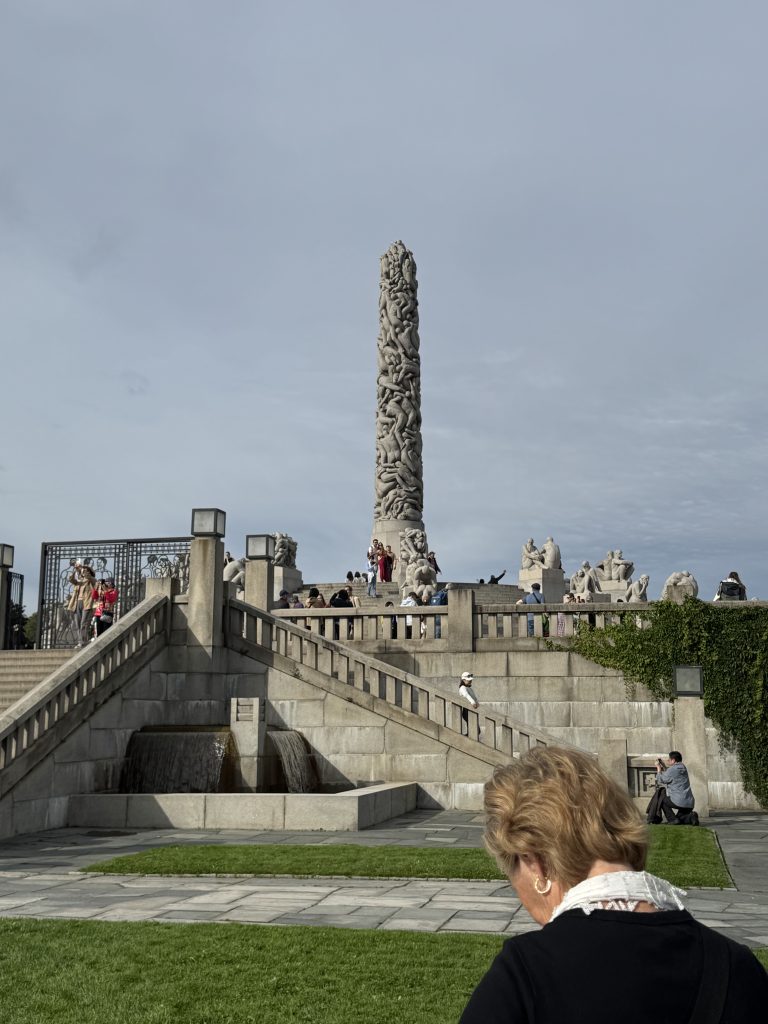
The final section is this granite monolith, surrounded by a huge array of other sculptures.
The monolith weighs 270 tons. It took 13 years for 3 men to complete.
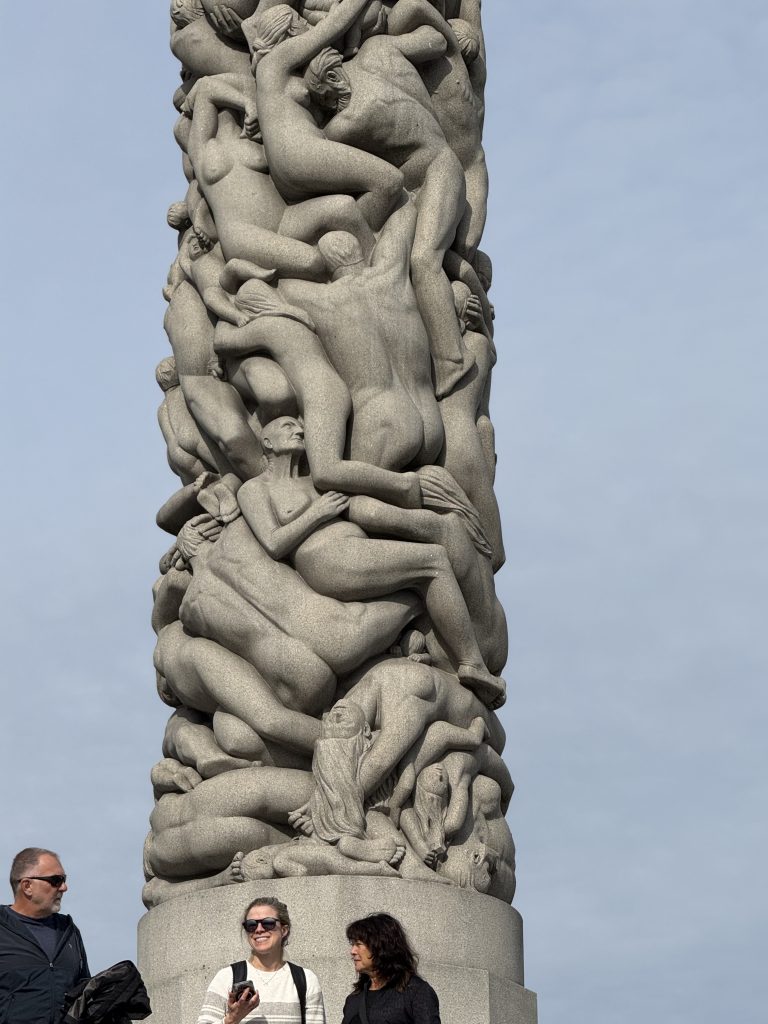
Gustov Vigeland created all the plaster casts here, but of course other sculptors were brought in to complete the park.
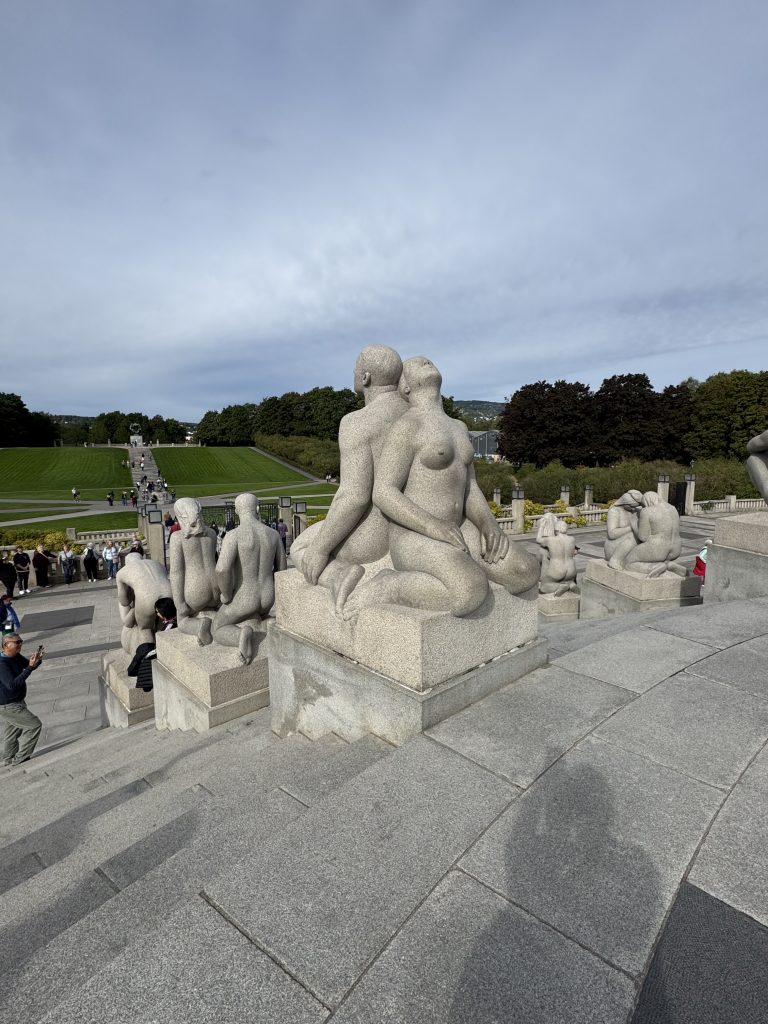
Each of the surrounding sculptures took 2 years to create.
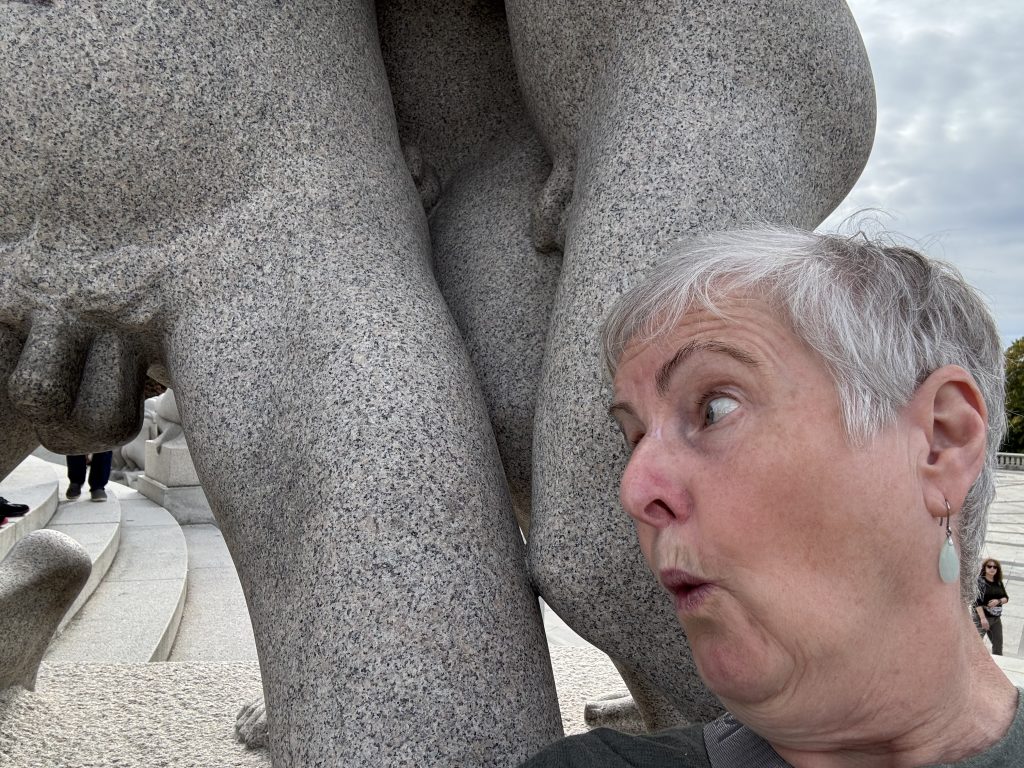
Genitalia at eye level! Enough to frighten the horses…
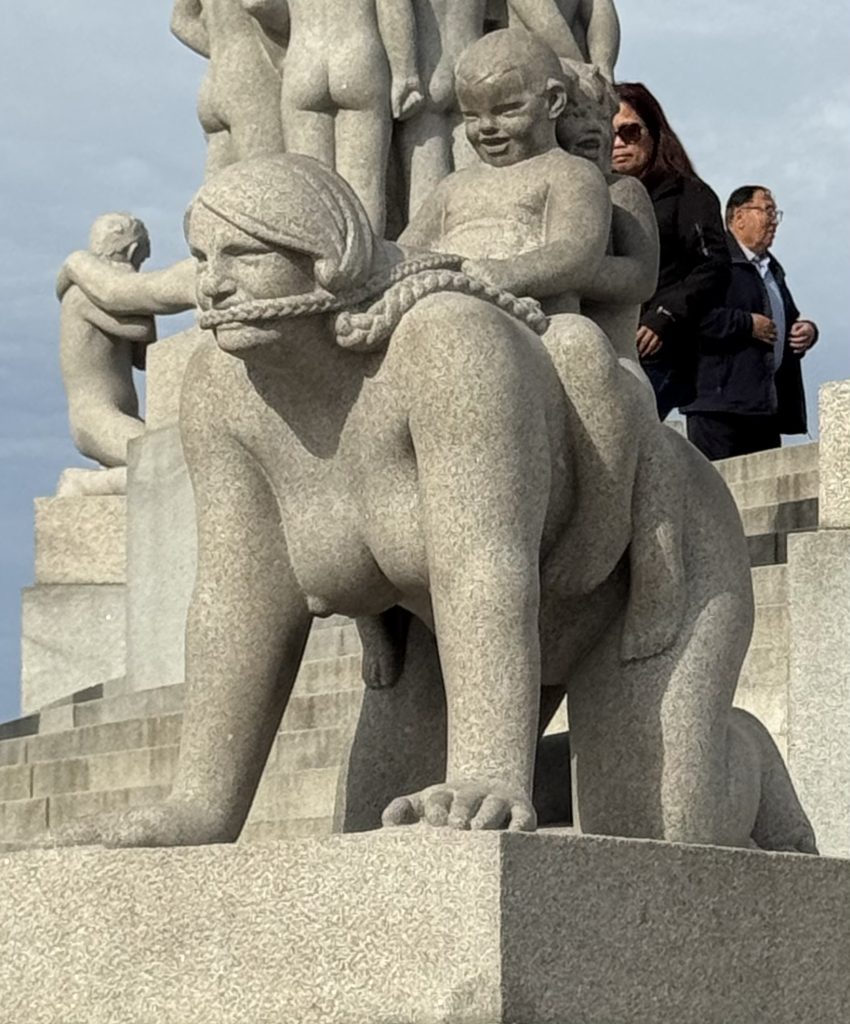
As I said before, not all of the images are comforting.
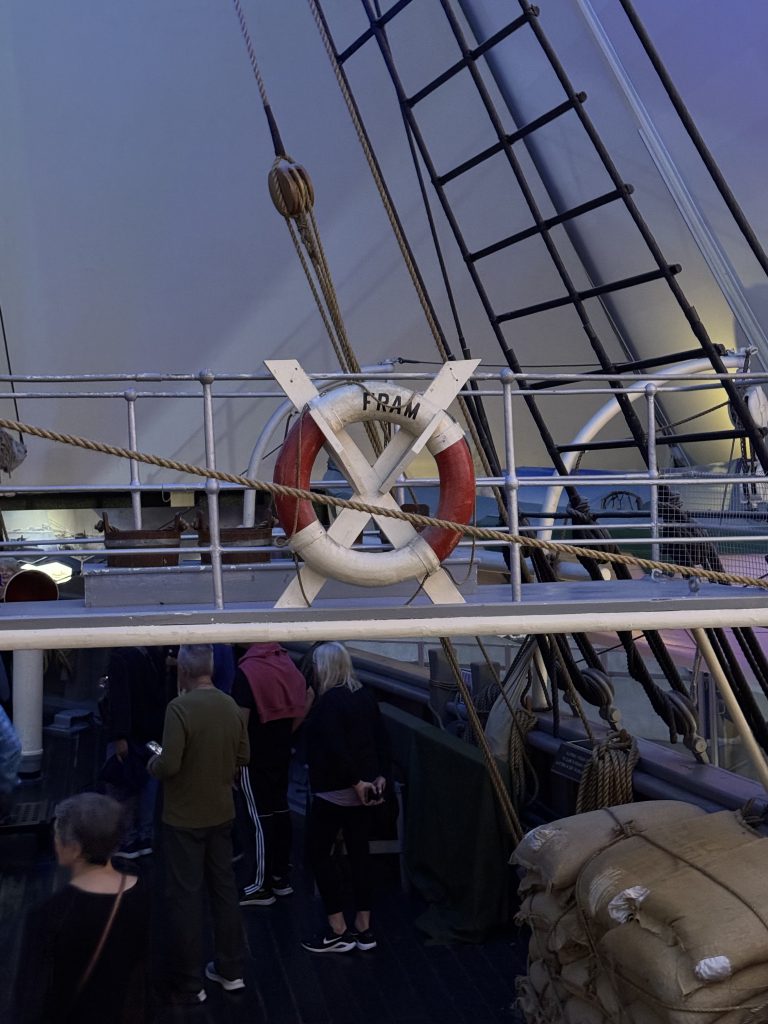
We stopped for lunch at a museum where they have the ACTUAL ship, the Fram, that took Amundsen to the South Pole, ( where he beat Scott by a month) and it was also the same ship that mapped the west side of Greenland.
Seeing as I’ve been to both countries, I was interested.
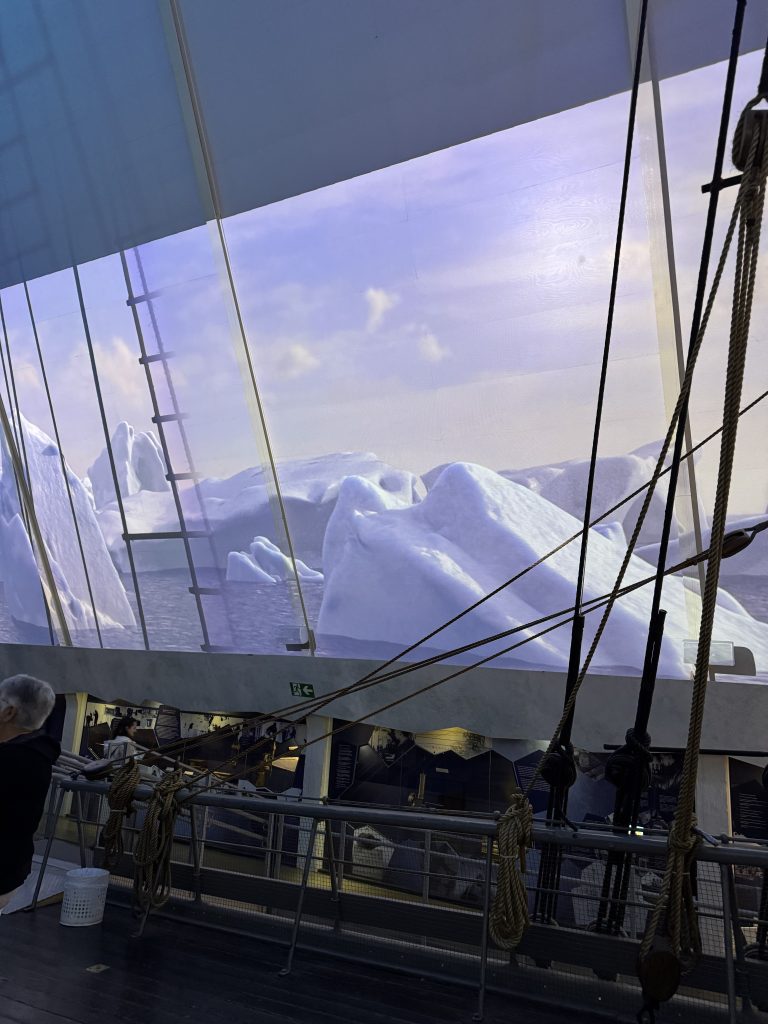
After going through it, I have to say that those guys were stark, raving crazy. This ship is tiny. As in, really, really small. This is the actual ship… they built the museum around it.
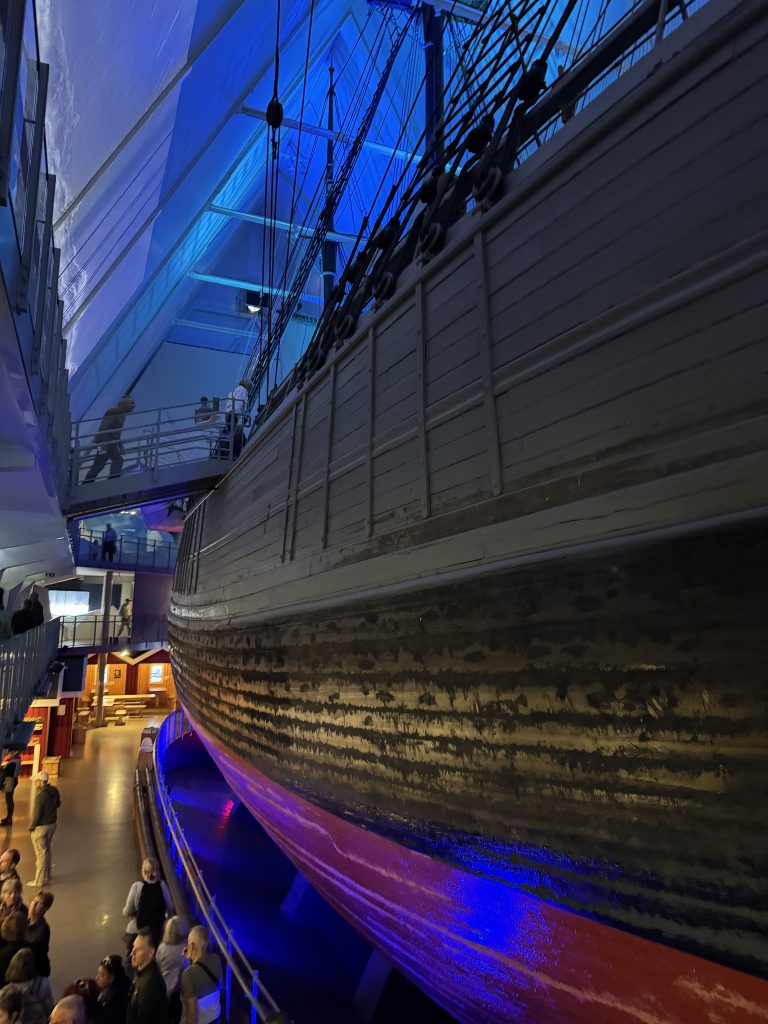
One thing I found interesting was that the ship was designed to pretty much let the currents take it. The bottom of it was shaped like an egg, so when the pack ice formed around it, it would bob to the surface instead of being crushed like the conventionally shaped ships were.
I watched a video about Amundsen and his trek to the South Pole. Here’s a snippet for you. As you can see, it was original footage. There’s no wonder that he beat the English expedition. He thought of everything his crew would need… even a Christmas tree!
He had sewing machines to repair sails and clothes. A piano for morale. The captain stayed at the wheel while everyone else had Christmas dinner.
Of course, the Norwegians used sled dogs while the English used ponies (which froze to death) and modified cars ( which also froze to death. ) Unfortunately, so too did the English expedition.
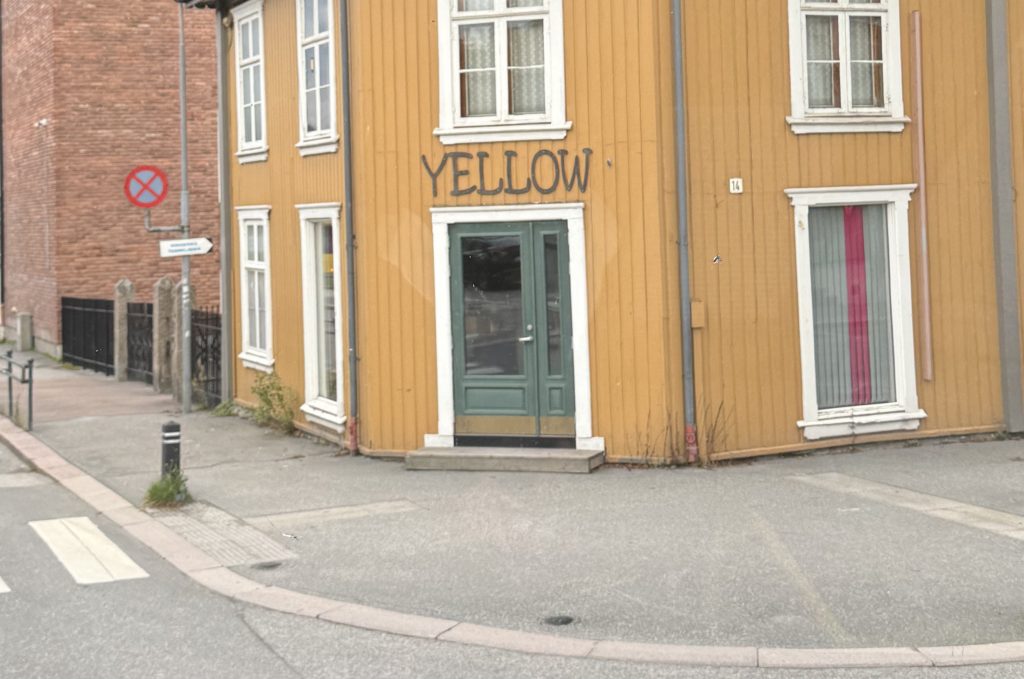
After lunch, we set off into the mountains. We have 5 days in the countryside before we come back to Oslo.
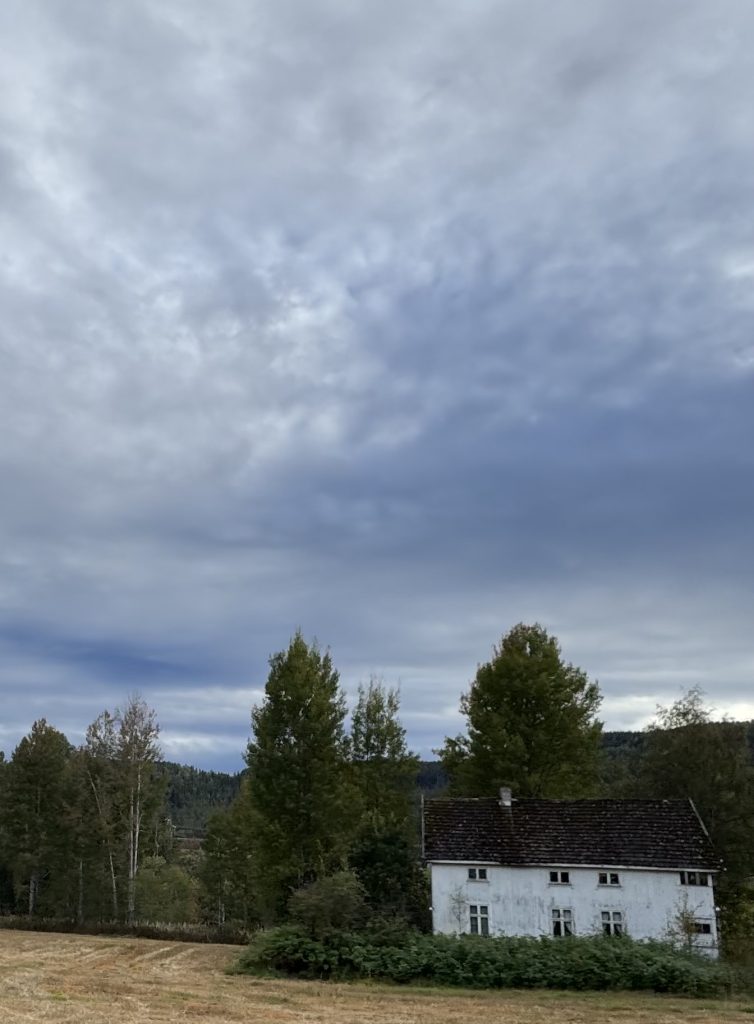
Here are a few shots I took along the way.
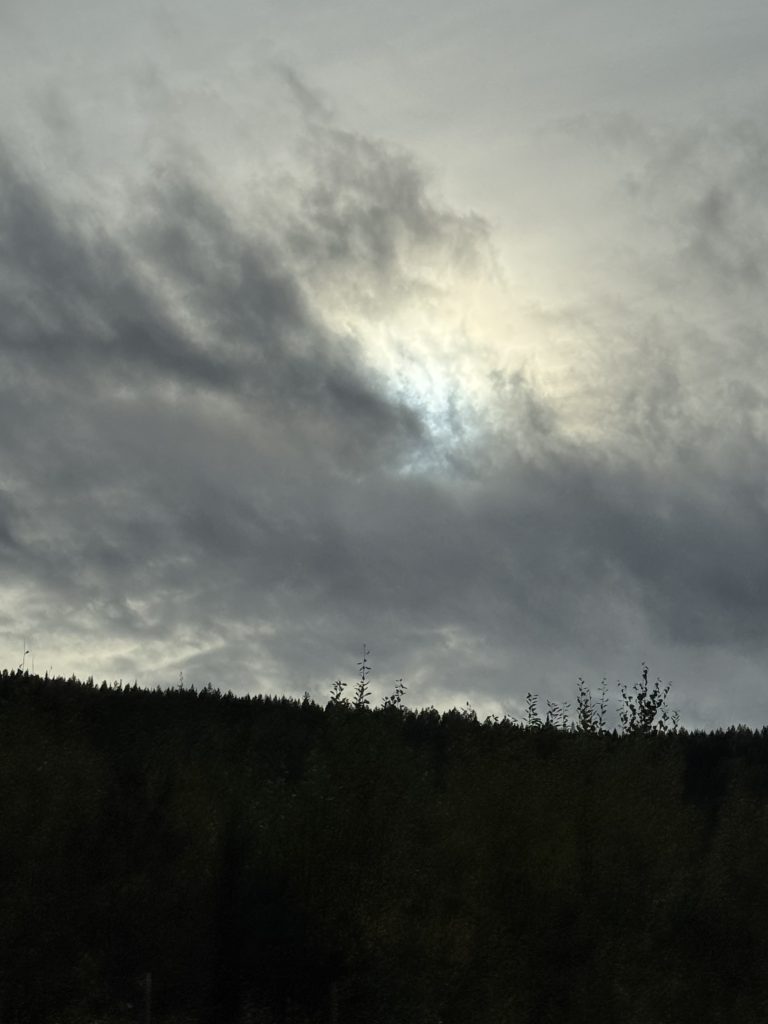
Moody.
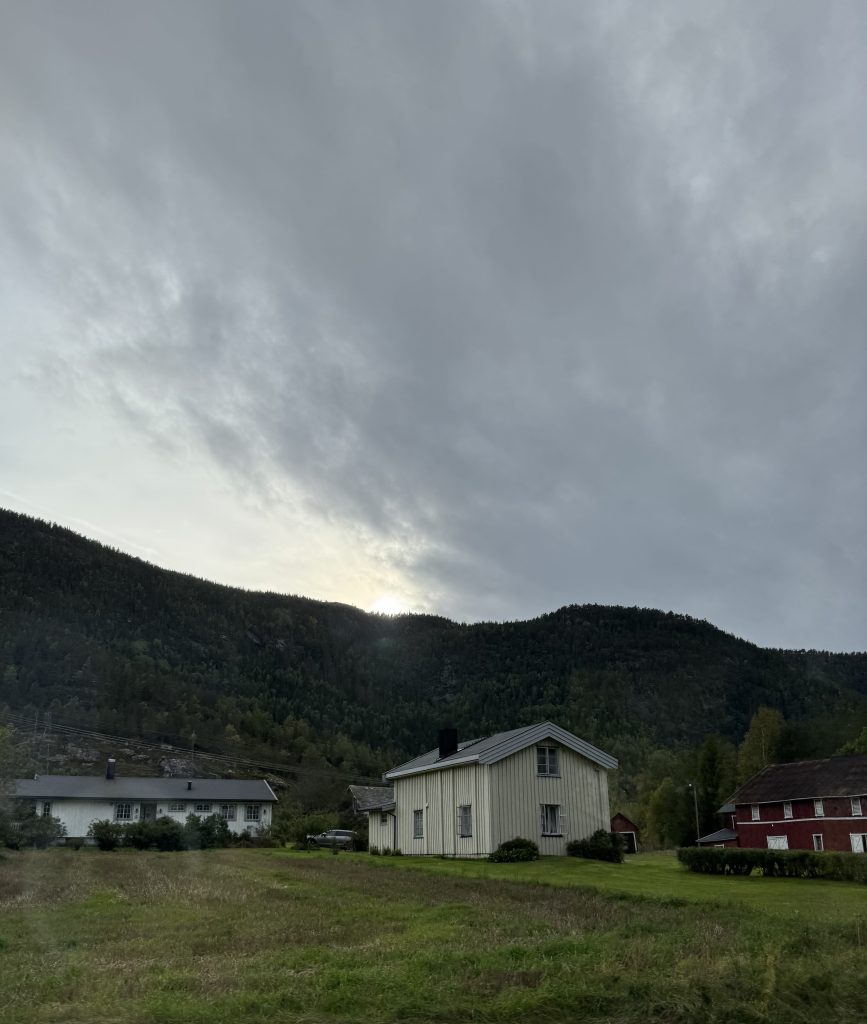
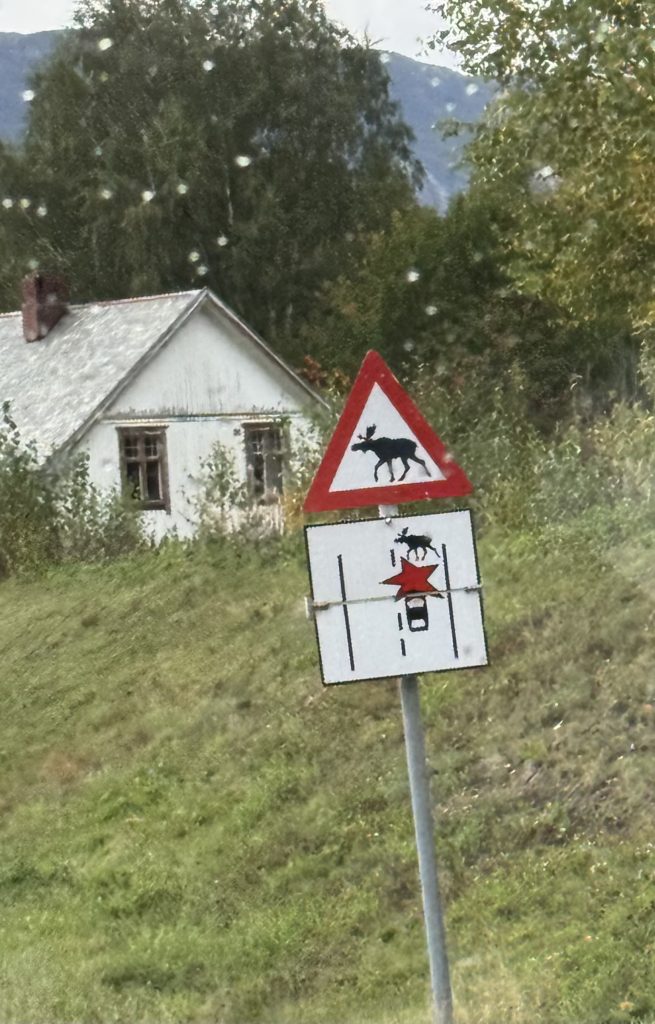
Another new road sign! I’m not sure if it’s for moose or elk.
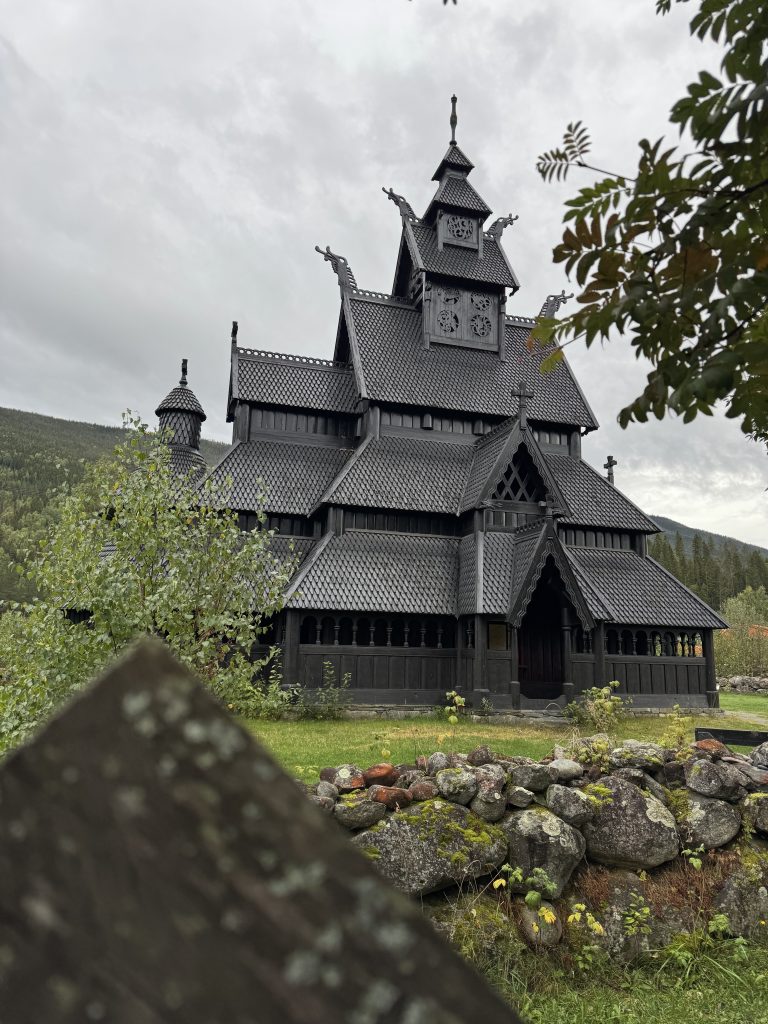
This is a replica of the oldest church in Scandinavia, the Borgund Stave church. The original church has been moved to an historical theme park for old buildings in Oslo, after the singer of a metal band in the 90’s started burning down old Catholic churches in Norway because he thought that the Catholics were mean to the Vikings. The church was moved to protect it.
We’ve been hearing about trolls all day. Trolls in Norway don’t live under bridges. They live in the forests, only coming out after daylight.
When we went to see the church, we saw one.
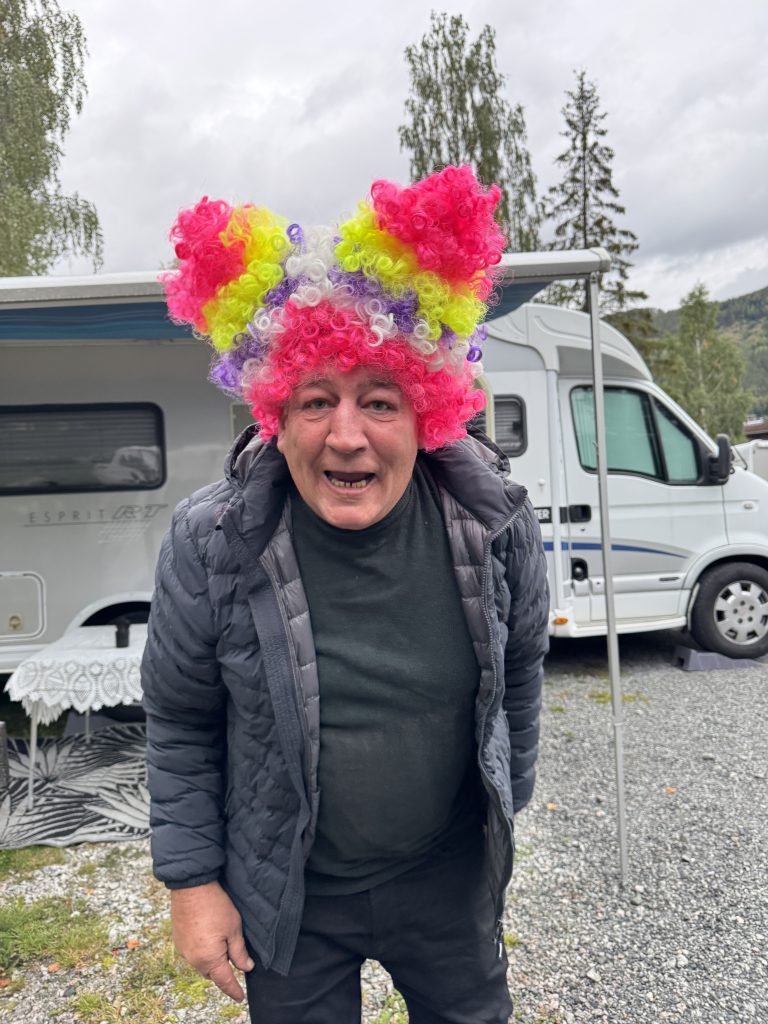
He came out from the caravan annexe, singing and dancing.
He picked me up and whirled me around and I took a breath… and realised that I didn’t need a wine with dinner tonight. I was drunk from the fumes wafting from him.
He put me back on the ground, then started dry humping my leg like a dog.
All in all, an eventful day!
Dad joke of the Day:

That park is amazing and the sculptures fantastic.